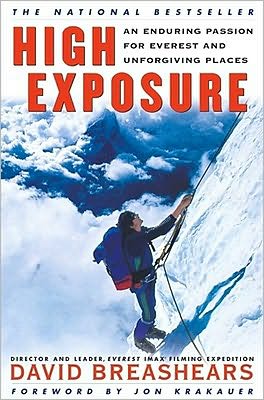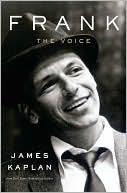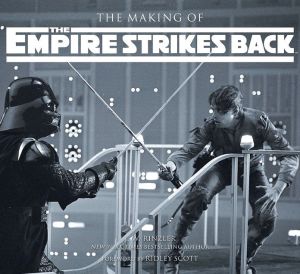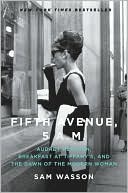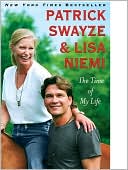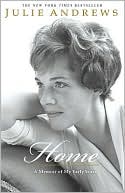High Exposure: An Enduring Passion for Everest and Unforgiving Places
For generations of resolute adventurers, from George Mallory to Sir Edmund Hillary to Jon Krakauer, Mount Everest and the world's other greatest peaks have provided the ultimate testing ground. But the question remains: Why climb? In High Exposure, elite mountaineer and acclaimed Everest filmmaker David Breashears answers with an intimate and captivating look at his life.\ For Breashears, climbing has never been a question of risk taking: Rather, it is the pursuit of excellence and a quest...
Search in google:
Ever since Jon Krakauer scored a national bestseller with Into Thin Air , a flood of climbing memoirs — particularly those that focus on Mount Everest — has hit the bookstores. Many of these books amount to little more than a lame attempt to cash in on the latest trend in publishing, but several stand out as extraordinary documents of man's hubristic and never-ending need to challenge nature. Among these, David Breashears's High Exposure emerges as one of the best. Breashears, a legendary climber in his own right, is best known outside of mountaineering circles as an IMAX cinematographer. He was making an IMAX film on Everest in 1996 when the killer storm made famous by Krakauer hit, and he fashions his engagingly written life story around that experience — which he regards as the defining moment of his life. Read an excerpt from High Exposure's prologue below. The New York Times Book Review - Bruce Barcott There exists no stronger evidence that a lifetime spent inpursuit of the summit does not inevitably lead to insight, wisdom and happiness....After all his trips...Breashears is still struggling to understand why he and so many others throw themselves at its mercy every year.
Prologue: Everest 1996\ As a mountain climber, I've always felt more drawn to the top than driven from the bottom. I was twelve years old when I came upon the famous picture of Tenzing Norgay standing atop Mount Everest. From that moment on, I equated climbing Everest with man's capacity for hope. Indeed, there's nothing so exhilarating, so purifying, as standing on its summit more than 29,000 feet above the sea, surveying the planet below. Before May 1996, I had climbed Everest twice, and each time I had experienced the singular sense of rebirth that the mountain has to offer.\ But Everest also offers the finality of death. On the morning of May 10 my Everest IMAX® Filming Expedition resolved to go up the mountain and help bring down survivors of an icy calamity that had left eight people dead. Over the next several days our expedition climbed up Everest, struggling with bitter cold and bitter truths and a deeply felt grief for our friends who would lie frozen in death forever. There's no place to bury the dead on an ice-bound mountaintop.\ In the week following Everest's cruelest disaster, other expeditions broke their siege and went home. Why did we stay on and ascend the mountain once more? On reflection, I think it was because I felt a strong kinship not only with the dead but with the mountain itself. I hated seeing it stand in disarray, under scrutiny from the world's media; I wanted redemption from the tragedy. I couldn't accept leaving, not after all my years on the mountain, not with reasonable weather and our enormous stock of equipment and human skill, not without trying one more time. Call it a specialist's pride: I felt it was up to us to finish — safely — this unholy episode. I wanted to prove that Everest was — in its grandeur — an affirmation of life, not a sentence of death.\ So, with the aid of a London-based weather service, we watched and waited for a break in the weather at the top. The jet stream, which sweeps across Everest in the spring, was howling around the summit, and no man-made instrument can accurately forecast when it will blow off the mountaintop and move north over the Tibetan plateau. For days, there was little change. I was dismayed but not astonished; I've seen the jet stream pound Everest for fifty uninterrupted days. Still, I searched reports for the tiniest shard of hope, anything to signal a positive turn. Nothing.\ Eventually we decided it was time to move out from our Base Camp at 17,600 feet: better to face the mountain in our boots than sit around in our tents brooding about it. On the slopes, we'd see for ourselves what the mountain held for us, and we'd let the mountain tell us when to climb — or not to climb. So we struggled into our gear and headed up — the entire IMAX filming team — camp by camp.\ We climbed back to the upper camps with the threat of the wind roaring ominously above at eighty to ninety miles per hour. In mountain climbing, it's not the wind around you that frightens you, but the wind that awaits you. Much of our trepidation was, to be sure, psychological. After all, skilled Everest veterans had died up there just weeks before.\ At dusk on May 22, the day we reoccupied the high camp, Camp IV at 26,000 feet on the South Col, the winds died out. It was a rare and welcome moment as we pitched our tents; we could actually stand upright, and we could continue that night toward the summit minus a goodly portion of our fear.\ The sun descended and the tent walls darkened. Though we were utterly exhausted, none of us could rest. Throughout the evening we readied our climbing gear and the film equipment and melted ice to drink. There's no malingering at the South Col camp. It's too high, too barren, and the air is too thin. There's no earthly reason to be there except to gain Everest's summit. We'd spent two years preparing for this summit attempt, training our bodies and minds, making checklists, customizing and winterizing and lightening the massive IMAX camera and everything else within our grasp.\ Now the weather had given us the break we needed.\ At 10:35 p.m. I unzipped my tent.\ No matter how many times I've made this journey, it always begins in the same way. It's pitch dark outside as I unzip the door. What little heat has pooled inside spills out into the frigid night air; the sense of safety and security I feel in the tent vanishes with the warmth. On my hands and knees I crawl into one of the world's most hostile environments, into my ultimate arena — the last 3,000 vertical feet to the summit of Everest.\ The stars were out that night but there was no moon. It was dark and cold, minus 30 degrees; the night was still. Looking above, I could barely see the outline of Everest, a dark, lopsided pyramid cut out from the stars.\ I sat on a small rock to put on my crampons (sharp metal spikes attached to my boots), which dug into the snow and ice. Bare-handed, I checked and rechecked to make sure the heel and toe clips were biting through the thin neoprene of my overboots, an extra layer of insulation over my climbing boots. I hadn't planned on using overboots up there. But after the catastrophe I felt inordinately vulnerable, not just to the cold, but to my own mortality. I've always relied on strength of mind to drive my body, and the body has always been good with plenty of horsepower. But the deaths in that disastrous climb reminded me that I was forty years old now. I had borrowed the overboots from a friend, Jon Krakauer, who had survived the May 10 storm.\ I walked among the nylon domes of the heavy-weather tents, hoarsely shouting that it was time to go. The tents were already alive, sides huffing out with the movements inside, zippers scraping in the silent night. Sherpas and team members gathered their gear, and I mentally ran through my own checklist one more time: two full bottles of oxygen, spare mittens, ice axe, and, most important, my compass fixed with a heading so that even in a storm I could find my way home. There was no idle chatter in the air, only tension and focus on the mission.\ The South Col is a broad expanse of rocks, a hard, flat, forbidding surface. I knew that the featureless terrain had been a deadly problem for the descending climbers on the night of May 10 because, without a compass to guide them, there were no directional clues in the blizzard's whiteout. Lost and desperately searching for high camp, eleven climbers had collapsed at the edge of the 8,000-foot precipice of Everest's Kangshung Face overlooking Tibet. There, a few hundred yards from safety, one woman, Yasuko Namba, had frozen to death, and a Texan named Beck Weathers had suffered mutilating frostbite.\ I crossed the South Col to the first icy incline, awkwardly duckwalking on crampons scraping against fist-sized rocks and bulletproof ice. Like my team, I knew I was hypoxic (starved for oxygen), severely sleep-deprived, dehydrated, and malnourished. Yet here I was, commanding my body to work as hard as it had ever worked. That makes for tough going. But after an hour of robotically placing one foot in front of the other, I finally found my rhythm. All I could hear was the raspy sound of my labored breathing as I inhaled and exhaled through my oxygen mask, my breaths keeping pace with each step.\ Yet this time there was no matching sense of purpose and exhilaration, only the grim knowledge of the littered battlefield we would find as we climbed higher. I'd been involved in body recoveries on Everest before, but there had been nothing in my training to prepare me to pass through the open graveyard waiting above: This time the graveyard held friends.\ There are other bodies — bodies of people I'd never met — scattered from Advance Base Camp to points near the summit. Several hundred yards below Advance Base Camp, at 21,100 feet, a climber lay near the route, wrapped in a blue tarp. And for years, before the wind finally blew her remains over the Kangshung Face, every Everest expedition climbing on this route had passed Hannelore Schmatz, a skeletal landmark just above the South Col with her brown hair streaming in the wind.\ Also near the South Col camp lay a Czech and, higher up, a Bulgarian. Years earlier, on the glacier below, I'd gathered the frozen bodies of two Nepalese climbers.\ The North Col route, on the Tibetan side, was similarly strewn with climbers who had never come down. In 1986 I'd helped carry a Sherpa friend buried by an avalanche to Rongbuk monastery for cremation. And one of my documentaries followed the search for the most celebrated of the dead, British legend George Mallory, who vanished near the summit in 1924. Wherever they lie, the dead mutely testify to the sinister ease with which a day on Everest can come undone.\ Despite the snow and ice, Everest is as dry as a desert; the sun and wind quickly mummify human remains. They come to resemble nothing so much as that ancient iceman discovered years ago in an Italian mountain pass. I've dealt with them before, and hardened myself to the harsh knowledge that the line between life and death is mercilessly thin in the frigid and rarefied air of this unforgiving place.\ But this night was different; those waiting ahead were people I had known and respected. We knew exactly where one of the best-known Everest guides, Rob Hall, had died, due to his final radio transmissions. From other reports we had a good idea where Scott Fischer lay. Doug Hansen died near Rob and we thought we'd find him, too. But Andy Harris was still missing. Our team had had nearly two weeks since the tragedy to face our fears and sorrows and anger. Still, it's one thing to deal with your demons at the foot of the mountain, quite another to see comrades lying dead in the snow.\ Hours passed as I resolutely climbed higher and higher, with little sense of gaining height because of the darkness beyond the circle of light from my headlamp. I felt alone and detached, in a trancelike state, as I always have on these summit slopes. But when I looked back I could see the shafts of light from my companions' headlamps, and it was comforting to know that they were there, making their solitary journeys with me.\ Sporadic gusts of wind swirled loose powder snow and I would pause with my head bowed east, away from the icy spray. Prior to dawn, at 27,100 feet, below the gully that leads to the Southeast Ridge, I was startled by a blue object off to my right. I was hypoxic and briefly confused. From Anatoli Boukreev's report I'd known that Scott Fischer would be near this spot. But the intense effort of the night had smothered that thought. And now my dulled brain struggled to make sense of it: How could someone as strong and resourceful as Scott end up here? It seemed dreamlike; it couldn't be real.\ I didn't go near him. On this day I needed to conserve myself, and distance was a defense. By the light of my headlamp I could see that he was lying on his back across a narrow snow-covered terrace, one leg outstretched, one bent, and his arm tightly clenched across his chest. His body position was awkward, slightly contorted. I could readily imagine Scott resisting to the end, his strength and will to live slipping away, until finally he lay back and death stole over him. Anatoli, who tried to save Scott on May 11, had lashed a backpack over his friend's head. I was grateful for that. I didn't want to see the ruin of Scott's handsome, friendly face.\ I turned, climbing onto the Southeast Ridge at 27,600 feet. It's a vivid sight, peering over a knife-edged crest down two vertical miles of the Kangshung Face into Tibet. It seemed as though I could see halfway across the continent from this vantage point. Sun rays lit the tallest summits of the Himalayas first, one at a time, like candles glowing above ink-dark valleys. To the east, the world's third highest peak, Kanchenjunga, stood rimmed in crimson. And much closer, Makalu, the fifth highest, shimmered orange and pink.\ Three hard hours later we reached the South Summit and the traverse to the Hillary Step, a forty-foot cliff at 28,700 feet. The route here is wild and exposed, along a narrow corniced ridge, the last barrier to the summit. I had planned to film this dramatic traverse as a centerpiece for our film. At its start, between a wind-blown cornice and a rock wall, lay a red-clad figure. He was lying on his side, buried from the shoulders up in drifted snow. His left arm rested on his hip and his hand was bare.\ It was Rob Hall; no mistaking him, even from a distance. He was wearing a red Wilderness Experience jacket like one I'd owned. His red Patagonia bib overalls bore a distinctive checkerboard pattern in the weave which I had noticed two weeks earlier when I descended past him and his party of clients. He was facing east with his back to the wind.\ My first thought was that — typical of Rob — the site seemed well ordered. It was clear that he had made a determined attempt to survive. He'd removed his crampons to prevent them from conducting cold through his boots. His oxygen bottles were arranged carefully around him. Two ice axes were thrust vertically into the snow. One I knew belonged to Rob, the other — we later learned — to his assistant guide, Andy Harris.\ The last thing you want to do in a storm is lay down your ice axe. Snow will cover it, or it will slide away, or you'll simply forget where you put it. Upright and at hand like this, the axes showed that Rob and Andy — or at least one of them — had been thinking clearly in the early hours of their desperate bivouac.\ I knelt in the snow next to Rob. I couldn't see his face and so felt a little distant from him. Then I looked at his bare hand, still undamaged by the elements. What was a seasoned mountaineer like Rob doing without a glove? A glove is a climber's armor. How had Rob's vanished?\ I looked down at my own heavily mittened hands and pondered sadly. So much of Rob's life had mirrored my own. We were roughly the same age, with a similar level of experience, ability, ambition, and confidence. Both of us were driven to make a life in the mountains, a life on Everest. But now he lay dead.\ Studying his bare hand, I suddenly understood the dread Rob must have faced, the terrible knowledge that he was so cold and weak that he'd lost control of his own life. He'd been alive and uninjured, but the wind and cold of that awful night left him hypoxic, hypothermic, and frostbitten, and so he'd lain trapped in this remote outpost, utterly unable to save himself. I couldn't imagine a worse nightmare.\ Mingled with my sorrow, I must confess, were feelings of anger toward Rob which I had carried with me all the way from Base Camp. I knew in my bones that the mistakes of May 10 could have been avoided, that hubris had likely doomed Rob and his party. Of all the guides, Rob had been the most outspoken about his prowess, and the most proprietary about the mountain. He had sometimes acted as if he were a part-owner of Everest, an attitude I found disturbing. Everest is many things to many people, but owned is not one of them.\ His clients had come for a climb, not to take serious risks. Rob's expertise was supposed to be their warranty against danger and Rob had let them down. There was an ugly premonition of disaster. We'd watched fifty-five people swarm the fixed ropes to Camp III before their summit push. That was the day I'd decided to take our expedition back down the mountain and wait for the weather — and the crowds — to clear before attempting the summit ourselves. So I was angry at the sorrow and chaos caused by these tragic deaths. That's not how things are supposed to work for clients paying to climb this great mountain.\ I looked at Rob, and at the bare, open hand that would never draw on another mitten or hold an ice axe again. I held up a handful of snow and let it blow away like ashes. As I sat with Rob and thought about his valiant attempt to save a client and the questions that needed answering, I saw myself lying there: Would I have done the same?\ Suddenly the Sherpas appeared, coming up the ridge carrying my camera equipment. Time to move on, I silently announced to Rob. I couldn't film this spot. His death had made it hallowed ground for me; this was one piece of Everest he could, at last, call his own.\ I stood and put on my pack. Then we began to climb the final sweep of the mountain.\ Copyright © 1999 by David Breashears\ Foreword\ Most of the world knows David Breashears as an uncommonly intrepid filmmaker: the guy who brought back spectacular IMAX footage from the top of Mount Everest. Others associate his name primarily with Red Flag Over Tibet, the disquieting, Emmy Award-winning documentary about the Chinese occupation of the Buddhist homeland, which he made for the PBS series Frontline. Among a handful of Hollywood insiders he is celebrated, as well, for being the guerrilla cinematographer who smuggled a 35mm Arriflex into Tibet and surreptitiously filmed scenes that lent crucial authenticity to the big-budget epic Seven Years in Tibet.\ The renown that Breashears has earned for his work in film is certainly deserved. But to a small, immoderately idealistic community of rock climbers who lived in Colorado in the 1970s (a community of which he and I were part), his most remarkable feat has nothing to do with making movies. Some of us believed — and still believe — that Breashears's defining moment was his authorship of a little-known climbing route, name of Perilous Journey, which rises in the foothills outside Boulder, Colorado. The large-format film, Everest, the Emmy Award, his four expeditions to the 29,028-foot summit of Everest — they all pale in comparison with his first ascent of this obscure rock climb, which measures scarcely 100 feet from bottom to top. If you want to understand David Breashears — if you hope to comprehend what really makes him tick — you need to know a little about Perilous Journey.\ The forested hills south and west of Boulder bristle with precipitous crags that have long attracted climbers from around the globe. In July 1975, Breashears — then a climbing-obsessed nineteen-year-old casting about for a suitable challenge — latched on to the idea of pioneering a new route on one of these crags, an out-of-the-way cliff called the Mickey Mouse Wall. The route he envisioned scribed a line up a swath of untrammeled sandstone that, to the casual observer, appears much too steep and smooth to climb. But after careful study of the cliff's geologic idiosyncrasies, Breashears became convinced that the rock had a sufficient number of surface blemishes — feldspar crystals, dime-size divots, and tiny pebbles of conglomerate protruding from the vertical plane — to allow upward progress, at least in theory.\ It was obvious that if the route could be climbed at all, it was going to be exceedingly difficult, right at the limit of what was physically possible at the time. It was also obvious that the absence of deep natural fissures would preclude the placement of aluminum nuts to safeguard his passage over the route's most severe section. If he lost his purchase on any of the minuscule finger- and toeholds, he would plummet into the jagged boulders that line the base of the cliff.\ As it happens, the broad ledge that marks the summit of Perilous Journey can be reached via a routine scramble up a broken section of cliff nearby. Before attempting the route, it would have been a simple matter for Breashears to rappel down the cliff from the top, rehearse all the moves with a safety rope from above, and drill a series of expansion bolts that would erase all the danger from his ascent. But according to the climbing subculture's unwritten ethical codex, the practice of pre-drilling bolts on rappel and unlocking a climb's secrets with a top rope constituted a despicable sort of cheating. The whole point of doing a route like Perilous Journey was to test one's mettle — to challenge not only one's physical skills, but take measure of one's judgment and nerve as well. The nonexistent margin for error was soberly acknowledged, but it was celebrated rather than lamented. In our youthful, self-absorbed zeal, we liked to imagine that the gravely serious stakes set climbing apart from lesser pursuits (such as mainstream sports, or working for a living). No climber in Boulder believed more passionately in the unforgiving tribal ethos than Breashears.\ On the chosen day (as he recounts later in this book), he bushwhacked up to the bottom of the Mickey Mouse Wall at dawn, accompanied by his friend Steve Mammen, who'd agreed to belay him. The morning smelled of pine and juniper. Nobody else was around. Breashears laced up his painfully tight climbing shoes, tied a rope to his waist harness, and dipped his fingers into a pouch of gymnast's chalk. Then he stepped up to the cliff and laid his hands on the brick-red sandstone. The climbing became diabolically difficult almost immediately. Crimping lentil-size pebbles with his fingertips, Breashears muscled and balanced his way slowly upward, shifting his weight from hold to minuscule hold with meticulous care, unraveling the route's defenses inch by vertical inch. Although the physical strain on his digits and forearms was nearly overwhelming, he maintained his poise and Zen-like focus, betraying none of the tremendous effort required simply to grip the rock, to say nothing of making upward progress.\ Twenty feet above the talus, in the middle of an overhanging bulge, Breashears arrived at the route's first substantial hold: a shallow, angled slot wide enough to grip with both hands. This hold also presented him with his first opportunity to place protective hardware: He managed to wedge a nut into the slot, albeit not very securely, clipped a carabiner to it, then ran his rope through the carabiner. In the event that he fell, the dubious nut would almost certainly be plucked from the rock like a berry from a vine, but, Breashears recalls, "It was oddly comforting to see the rope running through that solitary, useless piece of protection."\ The difficulties resumed immediately past the slot, and continued with scant respite for another twenty feet. Then, unexpectedly, he encountered a square-cut shelf about as thick as the spine of a hastily written book. When he pulled himself up to its relative security, he had reason to believe that the climb's major trials were over. The shelf stuck out from the wall no more than an inch and a half, but above it the cliff leaned back at an angle slightly less than vertical. By standing on the shelf and pressing his chest tightly against the rock, he could actually drop both hands to his sides and give his arms a desperately needed rest after twenty minutes of intense, nonstop effort. Better yet, the sandstone above his head was pocked with a series of Swiss cheese-like holes that looked big enough to accept his fingers to a depth of half an inch or more. Perilous Journey seemed to be a fait accompli.\ When Breashears reached up and felt the lowest of the pockmarks, however, he was alarmed to discover that it was much smoother and shallower than it had appeared from below. He reached higher, and then higher still, but none of the holes provided the kind of handhold he was willing to trust his life to. He was four stories off the ground. A slip from this point would send him hurtling into the boulders below.\ The gravity of his circumstances inspired him to redouble his concentration. A more thorough examination of the wall overhead turned up a rounded, jelly bean-size blister that he could wrap two fingertips around. Awkwardly reaching across his body until his right hand was above his left shoulder, he clenched the jelly bean, levered his body upward, and stretched as far to the left as he could. He smeared the soles of his boots onto a nearly featureless patch of sandstone, shifted his weight onto his left foot, and thereby managed to touch a small scoop that was slightly deeper than the other pockmarks were, and had a tiny ridge across its lower lip on which he could hook the callused pad of a fingertip. Twenty inches above this pathetic hold was a substantial ledge. Committing his life to the tips of two fingers on his left hand, he cranked for all he was worth, snaked his right hand up to the ledge, and wrapped his paws securely around its reassuring contours. A glance overhead revealed that the rest of the route was covered with large, in-cut holds. Within minutes he stood triumphantly atop Perilous Journey.\ It was a visionary ascent, one of the boldest achievements in the annals of North American mountaineering, done in impeccable style. A handful of other climbs of comparable difficulty existed, but seldom, if ever, had such extreme difficulties been undertaken in circumstances where the climber was unlikely to survive a fall. Yet, to nobody's surprise, Breashears wasn't hounded by journalists for interviews. No mention of Perilous Journey appeared in any newspaper, local or otherwise. He received no remuneration or formal recognition of any kind. Word of the climb, however, filtered gradually through the mountaineering grapevine. His ascent was reenacted in pantomime, move by move, in climbers' camps from Yosemite to the Tetons to the Shawangunks of New York. He had achieved something he valued much more than wealth or fame: the respect and admiration of his peers.\ In writing this foreword, my intent is not to nominate Breashears for sainthood. I have spent enough time in his proximity to know that he is impatient, driven, incredibly tightly wound. I have witnessed his explosive temper; indeed I have felt the sting of it firsthand. But he possesses, in abundance, a quality perhaps best described as "character." And I admire this trait even more than I admire what he has achieved in the arenas of film and mountaineering. Although I have disagreed with him both publicly and privately, I have always been impressed with his willingness to act on his convictions — even when his ire has been directed at me.\ Two decades after I first met David Breashears on a crag above Boulder, chance brought us together again on the slopes of Everest during what turned out to be a very bad season. When disaster struck, he placed the most important film project of his career in jeopardy, without hesitation, in order to provide assistance to those of us who were in trouble. That the creator of Perilous Journey emerged as one of the heroes of the 1996 Everest calamity came as no surprise to me.\ Jon Krakauer\ Boulder, Colorado\ February 1999\ \ Copyright © 1999 by David Breashears
Foreword13Prologue19The Kid29Perilous Journey49Worm69Camera Obscura85Himalayas101Everest117The Brotherhood of the Rope139Strange Winds173Cliffhanger187IMAX211The Crucible227Redemption277Epilogue299Acknowledgments307Index311
\ Bruce BarcottThere exists no stronger evidence that a lifetime spent inpursuit of the summit does not inevitably lead to insight, wisdom and happiness....After all his trips...Breashears is still struggling to understand why he and so many others throw themselves at its mercy every year.\ —The New York Times Book Review\ \ \ \ \ Publishers Weekly - Publisher's Weekly\ Possibly the most interesting aspect of this book is how improbable it seems that Breashears (Mountain Without Mercy) ever lived to write it. An accomplished alpinist, Breashears not only recounts his numerous, dicey ascents of the planets peaks but also explores his motivation for doing so. Though he is an experienced cinematographer whose past employers range from PBS to Hollywood, Breashears is most widely known as the director of the IMAX film Everest. While filming the movie, Breashears and his crew were fortunate to avoid the unforgiving storm at the mountains summit that led to the death of eight people and was chronicled in Jon Krakauers Into Thin Air. Breashears uses that tragic season on Everest as a frame for a personal memoir. The focus is on how he stepped out of the shadow of his violent military father and discovered his passions for climbing and filmmaking. Some of his psychology is simplistic, but there is no doubt that Breashears is as serious about understanding his actions as he is about succeeding in them. And there is no shortage of action, whether he is scaling a 1000-foot vertical rock or narrowly escaping being swept off a cliff by a runaway tonnage of snow. Though at times the book is self-aggrandizing, a little ego can be tolerated in this largely engrossing work, and is, perhaps, only to be expected from someone who has four times scrabbled up the ice and rocks of Everest to reach the top of the world.\ \ \ Library JournalTimes Bks. 1999. c.240p. permanent paper. photogs. maps. ISBN 0-8129-3159-9. $23. Copyright 1999 Cahners Business Information.\ \ \ \ \ Bruce BarcottThere exists no stronger evidence that a lifetime spent inpursuit of the summit does not inevitably lead to insight, wisdom and happiness....After all his trips...Breashears is still struggling to understand why he and so many others throw themselves at its mercy every year.\ — The New York Times Book Review\ \
